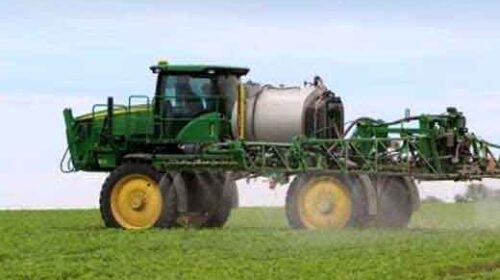Global Dicamba Herbicide Market to grow at 8.2 % CAGR, which is anticipated to reach USD 10.02 billion by 2030.
CRI Report has released a report titled “Dicamba herbicide Market – Analysis of Market Size, Share & Trends for 2019 – 2020 and Forecasts to 2030” which is anticipated to reach USD 10.02 billion by 2030. According to a study by CRI Report, the market is anticipated to portray a CAGR of 8.2% between 2020 and 2030. According to the report, The main driving forces behind the growth of precise agriculture include increased agricultural mechanisms in developing countries, rising labor costs as a result of a lack of skilled labor, increased pressure for food supplies in the world as a result of increasing population, significant savings on smart farming techniques and government initiatives to adopt advanced agricultural technology. The increasing need for optimal crop production with scarce funds gives it tremendous popularity among farmers.
The market report on global Dicamba herbicide market includes in-depth insights as:
- The estimated value of the market was USD 4.52 billion in the year 2020.
- Region-wise, the market in North America, which held the largest market share of XX.X% in the year 2020, emerged as a key market for Dicamba herbicide Market.
- Based on crop type, Cereals & Grains emerged as a key segment in the global Dicamba herbicide Market.
- Based on formulation, Salt emerged as a key segment in the global Dicamba herbicide Market
- Key players are likely to focus on product innovations and expansion through mergers to retain their positions in developed markets.
“Herbicide resistance in weeds increased crop loss due to weed problems, and the rising demand for food protection for the growing population are all factors driving the global market for dicamba pesticides. Furthermore, increasing knowledge of the benefits of dicamba herbicide in cultivators, as well as advancements in farming techniques, are driving market development. The demand for dicamba herbicide is also driven by the shift in agricultural practices from organic to conventional, as well as improved technology and government support of Integrated Pest Management by many countries around the world..”, said a lead analyst at CRI Report.
Dicamba is a benzoic acid herbicide used on soil, plants, and leaves. It’s also used to get rid of broad-leaved weeds. Dicamba is a water-soluble pesticide. It’s an effective weed-control herbicide that’s been around for forty years. To address the increasing growth in demand for fodder, dicamba herbicides are used to minimize crop loss and increase crop yield. In most agricultural applications markets, dicamba is replacing glyphosate. Rising awareness about the production of crops may majorly benefit the Dicamba market.
Global Dicamba herbicide market is segmented by Crop type into Cereals & Grains, Oilseeds & Pulses, and Pastures & Forage Crops. The cereals & grains category is thought to dominate as maize, wheat and rice are among the crops that have the largest crop area harvested in the world for the greatest share of the dicamba herbicides market in 2020. The global output of cereals will also hit XXXX million tons by 2030, XX percent higher than in 2020. The growth in Argentina, Brazil, China, Russia, Ukraine, and the United States is expected to be important.
Key Players in the Market
- Some of the key players operating in the global Dicamba herbicide market are DuPont, Syngenta AG, The Andersons, Inc., Syngenta AG, Alligare, LLC, Helena Chemical Company, Albaugh, LLC, Bayer AG, BASF SE, Dow, Nufarm Limited, and Monsanto Company, Other Prominent Players.
Get Valuable Insights into Global Dicamba herbicide Market
In the new report, CRI Report thrives to present an unbiased analysis of the global Dicamba herbicide market that covers the historical demand data as well as the forecast figures for the period, i.e., 2021-2030. The study includes compelling insights into growth that is witnessed in the market. The market is segmented by formulation into Acid and Salt. By Crop type into Cereals & Grains, Oilseeds & Pulses, and Pastures & Forage Crops. Geographically, the market is segmented into North America, Latin America, Europe, Asia Pacific, and Middle East, and Africa.




